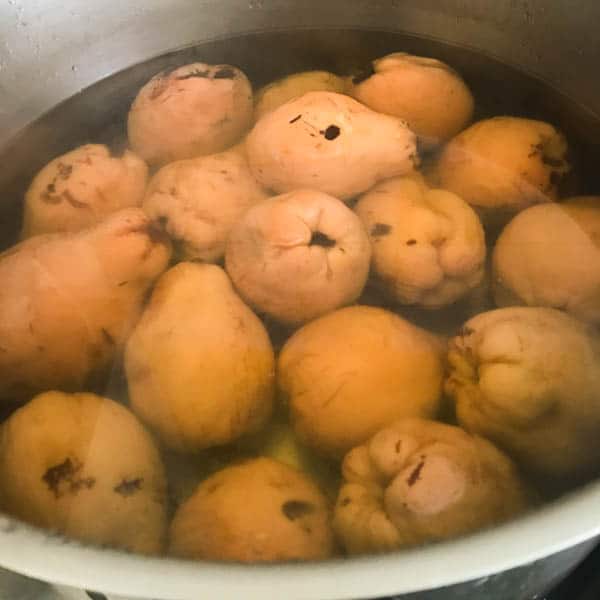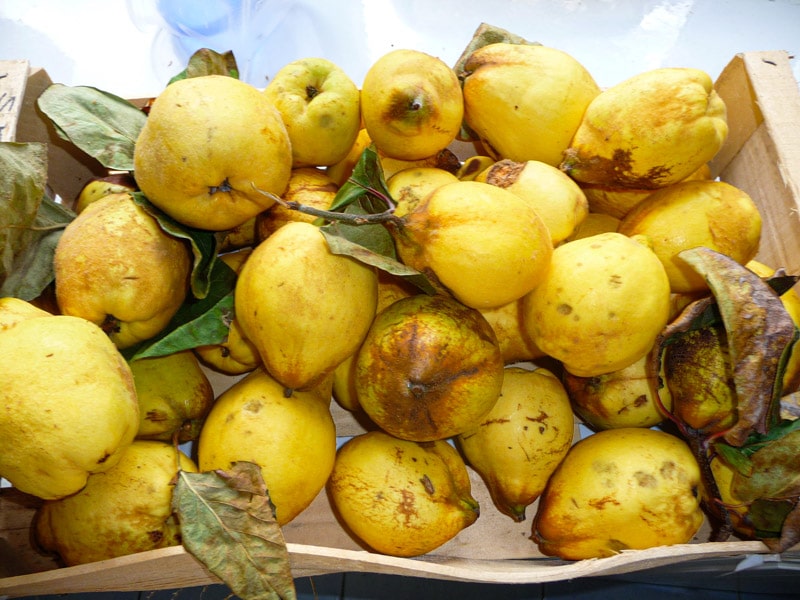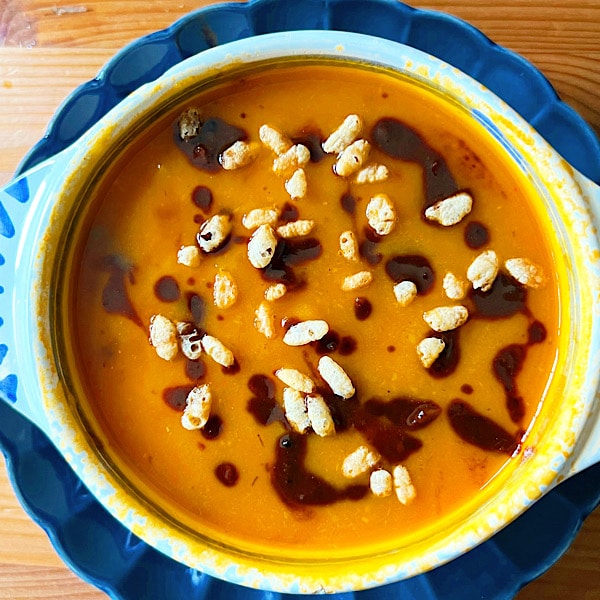Quince can be a hard sell because…well, everything about quince is hard. The fruit itself isn’t just firm, like a pumpkin. It is dense and murder-weapon hard. (It could easily double as a blunt instrument.) The skin is a right royal pain to peel off, the tight, grainy cores give even the sharpest knives a run for their money, and to top it all off, the exposed flesh oxidizes as fast as an artichoke. This means sliced, raw quince needs to be dunked into acidulated water (just a fancy term for water + lemon juice) to keep it from turning brown. Small wonder few cooks still care to bother with them.
And yet, those of us who love quince willingly put ourselves through these trials to experience its fragrant, honey-like taste, its strangely addictive grainy texture, and its magical rosy-red hue (which appears when the fruit is exposed to heat and forms anthocyanins.)
There is an easier way, and it all boils down to (forgive the pun): par-boiling , i.e., poaching the quince whole until it turns rosy and tender. I first got an inkling of the technique from an online search on how to freeze quince*. The pre-poaching technique makes quince as easy to cook with as apples or pears –and not a single scrap of the fabulous fruit goes to waste.
*My online search led me to this lovely, unassuming website by Maria Fremlin. I learned from Pierre Koffmann that this is how they deal with quince in southern France.
Poached, Softened Quince
whole quince
water
Rinse and gently scrub the greyish down from the quince skins. Place snugly in a saucepan, and cover with ½ inch water. Cover the pot, and bring almost to a boil. Gently poach the whole quince, covered, 15 to 35 minutes, or until the flesh can be easily pierced with the tip of a knife—it should feel like a ripe pear. Cool the quince in the liquid.
Drain the quince and reserve the cooking water for quince jelly.
Peel the quince, then cut into quarters. (Some cooks leave the skin on; I do as well if I’m making jam or mebrillo where it will just melt into the cooked mixture.) Carefully remove all of the tough core from each quarter with a knife.
The quince sections can now be used to make poached quince, quince jam…or frozen. They will work in any recipe you find that calls for quince, though you may have to adjust the cooking times a bit.

Just-poached quince. Ready to cool and use.

Peeled, quartered, just-poached quince.



This sounds fabulous..i love quince, but your right it’s a pain
I am eager to try this, but i want to ask you, do you know how to make quince liqueur ? Or can you recommend a brand? Many years ago i had some at a friend’s house but it was a gift to them from Mexico and could not tell me more, thank you
Hi there Rocio! I make quince liqueur every year “the easy way.” I place 1 cut up quince (skin, seeds and all) in a food processor, then blitz it till it’s finely chopped. Transfer this to a 2-quart jar, pour 1 70 ml. bottle of cognac or brandy overtop, add 2 tablespoons to ¼ cup sugar (depending on how sweet you like it), seal, shake, and let macerate 1 to 4 months. Strain and…it’s ready! I’m about to decant the batch I made in October and was thinking Christmas day would be a good time. Hope that helps. (PS, I get an inexpensive cognac or brandy. Not the cheapest, but definitely not the most expensive. The quince does all the work, flavor-wise.)
Hi there,
I’m interested in the quince liqueur recipe. Do you use a 32oz Mason jar? And 750ml bottle of brandy?
Oh, I’m so glad you’re interested in the recipe. 700 – 750 ml. bottle of brandy and a 32 oz. jar or larger. Hope you try it!
You make the liqueur with a cooked or uncooked quince please?
Uncooked quince!
What are your thoughts about sugar and quinces. A lot of recipes seem OTT with sugar or honey with quince. Thx
Quince have been paired with a lot of sugar and honey for centuries because their high pectin levels meant they could be turned into desserts. In North African cuisines, quince are cooked without sugar in tagines and savory recipes. How much you sweeten them is up to you.